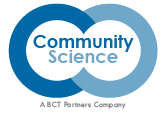Much attention has focused on reaching, educating, and enrolling uninsured people in health coverage programs. Getting people health coverage is one way to reduce racial and ethnic disparities in health, but it does not achieve health equity—going beyond eliminating differences among groups of people and attaining the highest level of health for everyone.
Healthcare coverage alone will not lead to better health if people don’t know how to use their benefits or if they continue living in unhealthy surroundings, such as a food desert. And, even if people knew how to access benefits, healthcare providers will not suddenly become more competent in serving new patients from diverse cultural backgrounds. Achieving health equity requires building communities’ capacity to mobilize, organize, and change the conditions that impact their health—social determinants of health. Achieving health equity also involves building community leaders’ and residents’ ability to compile data about disparities in their community; foster cross-sector collaboration; select the best solutions for their community; advocate for policy and systems change; and learn, adapt, and improve continuously.
While downloading data from the Internet has become easier, we haven’t made comparable progress in helping communities to 1) access publicly available data and 2) make sense of the data. In 2012, Community Science, with support from the U.S. Department of Health and Human Services’ Office of Minority Health, organized the Knowledge4Equity Conference to share the latest approaches and tools for accessing and using data to solve health disparities. To inform the conference agenda, we conducted a nationwide environmental scan among 157 community-based organizations. Only one quarter of the organizations indicated that they could access the data they needed. Additionally, they reported that they generally lacked the expertise to use data to inform strategies for their community.
Furthermore, community leaders and residents need help connecting their local disparities with policy and systemic issues. If they live in a food desert, they know well the reality of taking two buses for over an hour to access the closest grocery store. What they may not realize is that zoning, tax, and other policy-related issues prevent food retailers from opening a store in their area. Without understanding this connection, community members cannot strategically advocate for effective solutions, including changing local policies.
Finally, while collaborating with people from different sectors may sound simple, the process actually requires thoughtfulness and careful facilitation. Ensuring that residents can access fresh, healthy food, for instance, will require improving the public transit system and revisiting economic and housing development policies. However, people in transportation, healthcare, education, housing, and environmental protection all speak different languages. Transcending these differences to work towards the common goal of health equity takes considerable effort.
So yes, getting people health coverage is an important step toward ending health disparities, but let’s not lose sight of the real prize—building the capacity of communities to strive towards full health equity.
